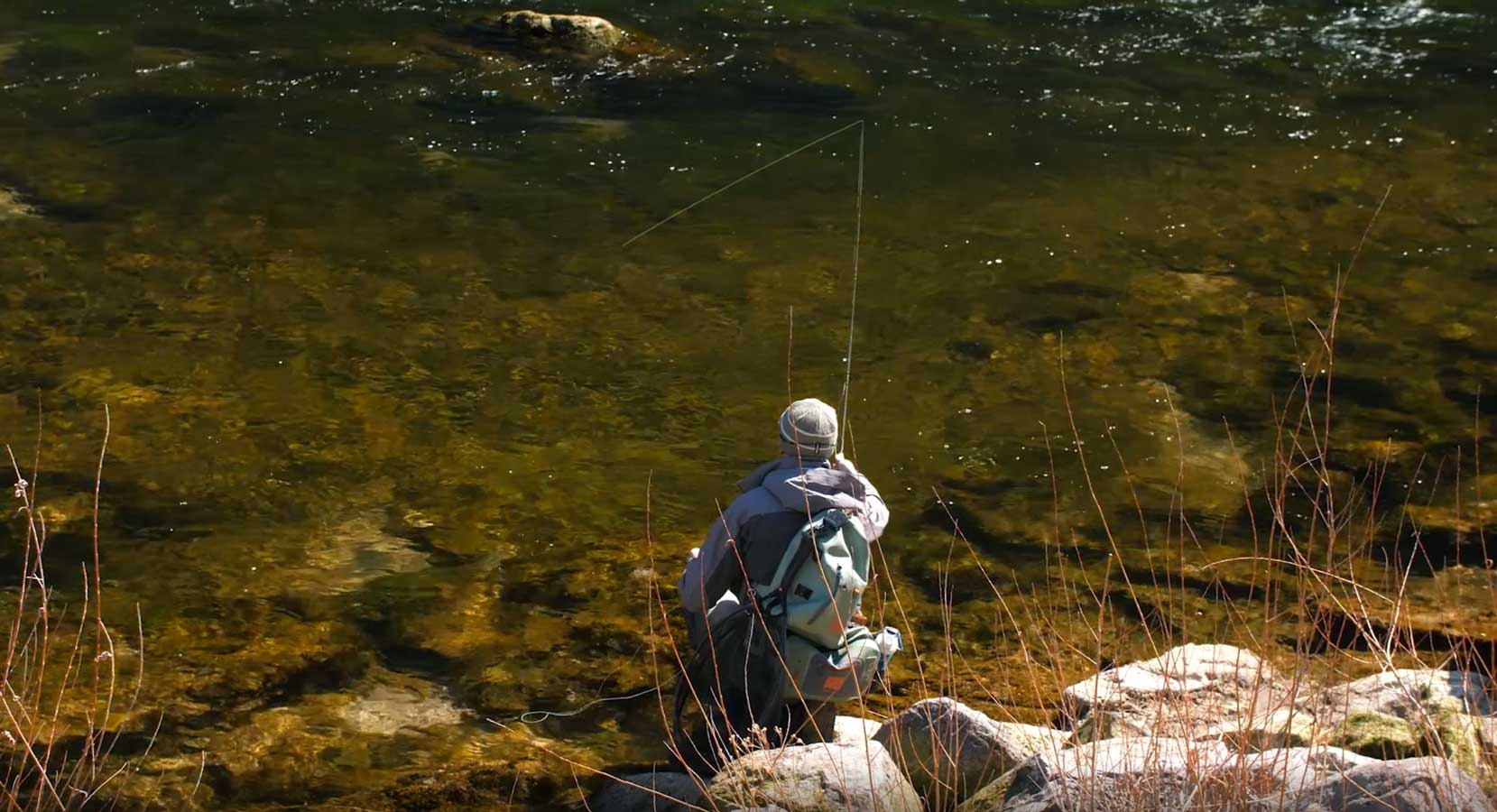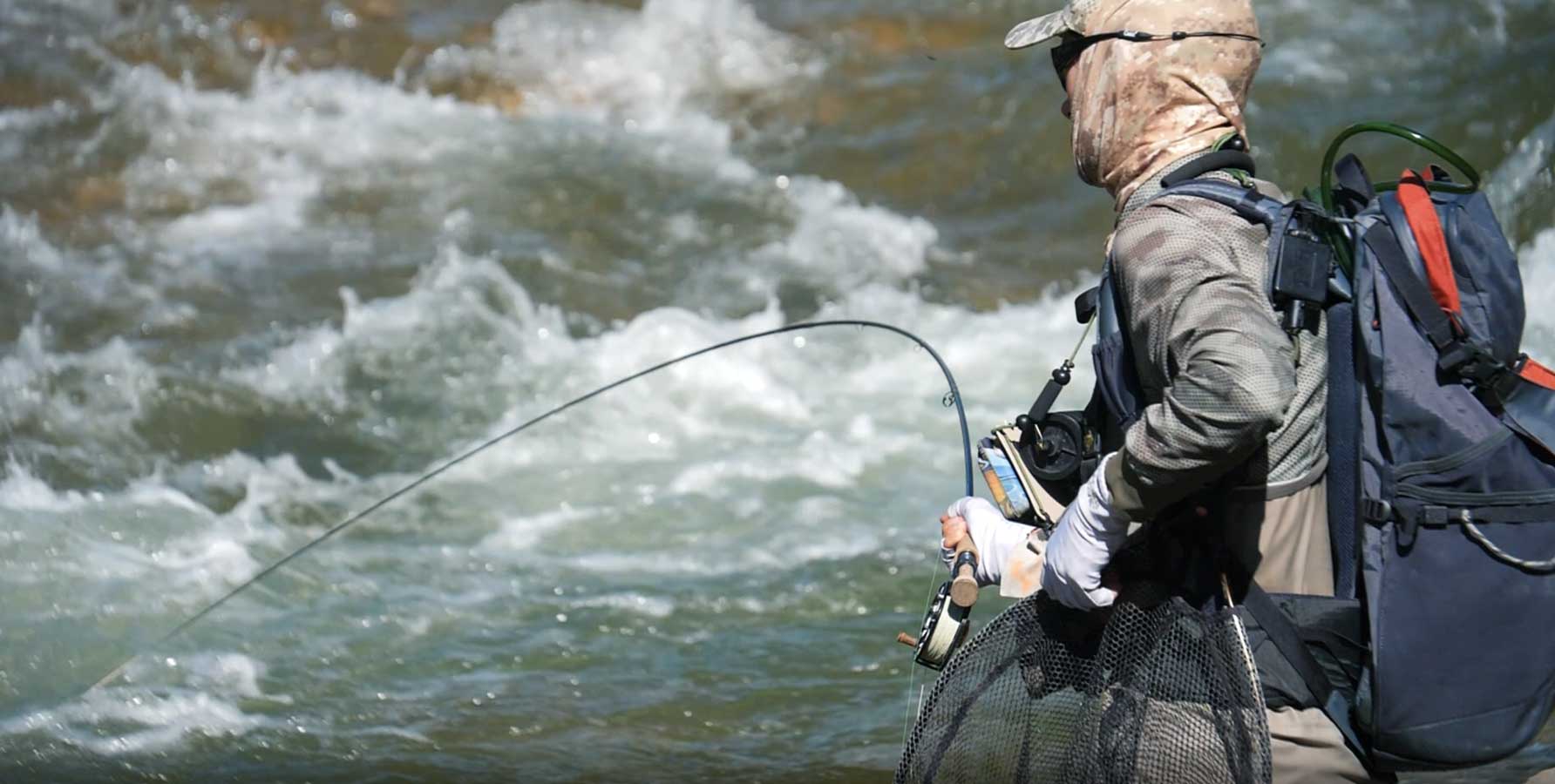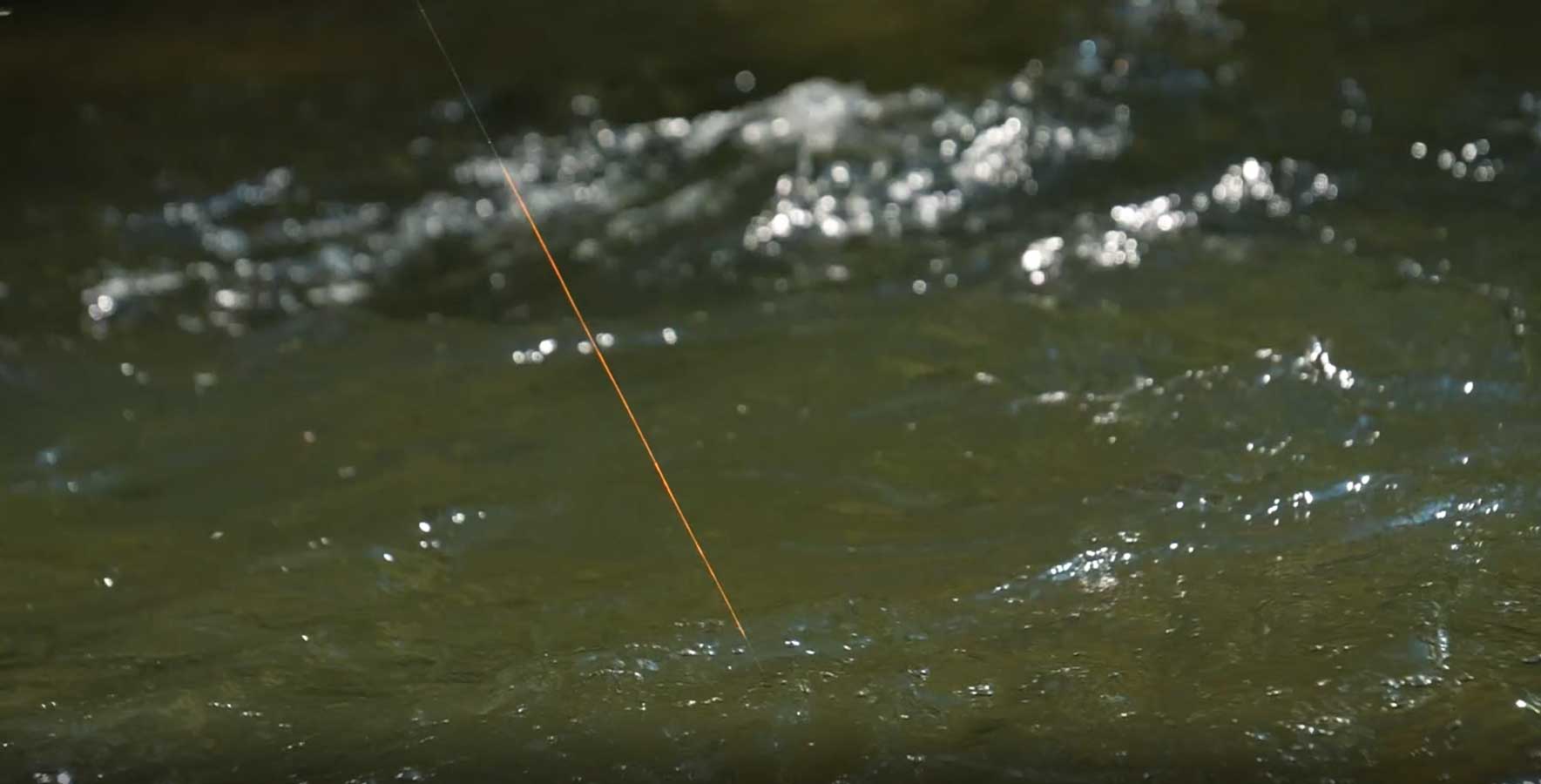Should You Give Euro Nymphing a Try?

Euro nymphing is a specialized style of fly fishing, but it doesn’t require a ton of new gear, just a willingness to learn. Image from “Adaptive Fly Fishing” DVD by Devin Olsen and Lance Egan
No doubt you’ve heard of Euro or tight line nymphing by now. You might have even heard some fellow anglers question whether it is fly fishing. (Fly fishers are fond of rule making.) But if you take all the variations of “fly fishing” practiced by anglers in the last hundred or so years, Euro nymphing is very close to the core of what fly fishing is: fooling trout with lightweight, hand-tied imitations of natural prey, presented on light tippets and leaders designed for drag-free presentation.
Why is it called Euro or tight line (or Czech) nymphing? Because it largely originated in Europe with Polish, French and Czech anglers who built techniques around staying in contact with their flies, chiefly so that they could excel at competition fishing. That’s not to say that all tight line nymphing started in Europe or with competitive angling. In the 1980s I spent time with a couple of US fly fishers who were experts at using tight line nymphing techniques in rivers and spring creeks. They even used what we now call “sighters” and heavy patterns or weight to help them stay in touch with their flies.
You might be wondering What is Euro nymphing and should I give it a try? How hard is it to get started with tight line nymphing, and do I need special gear and flies? We know that most of a trout’s food is taken subsurface, even if “showier” insects like adult mayflies and caddisflies tug on our dry fly heartstrings. So if you hang a nymph off of an indicator or dry fly because it increases hookups, why not expand your repertoire to be more effective at tempting trout where they are most likely to feed, and get even more hookups?
The good news is that if you’ve ever nymph fished without an indicator and understand the principles of a drag-free drift and presenting flies at the right depth, you’ve already begun to master tight line nymphing. The main difference is that tight line nymphing depends more on having a straight connection to your fly, and that depends on having at least one heavy nymph in your rig. The challenge (and fun) comes in learning how to adapt your casting, targeting and drifting techniques to achieve the highest number of hookups. And with the emergence of a mini-industry around Euro nymphing in the last few years it also helps to know what gear options are available and how various combinations of reel, rod, line, leader, tippet, flies and rigging will end up improving your success rate.

Anglers like Devin Olsen have done a tremendous amount to popularize Euro nymphing in the US. Image from “Adaptive Fly Fishing” DVD.
But let’s start by saying that you can probably start tight line nymphing with the gear you already own. You can flip your heavy point fly into your target drift with your 9-foot fly rod and 12-foot prepackaged leader, follow your leader downstream with your rod tip, maintain slight tension in the leader system, and strike when you sense any change in drift or leader movement. People have been doing it for ages. What can you not start tight line nymphing without? Heavy nymphs. If there’s one essential ingredient, it’s the flies that enable you to keep in touch (literally) with your fly or rig when you present them in the water column.
All the new gear—longer, more sensitive rods, lines designed to prevent sag, leaders tapered to help casting and contact, colored leader sections, tippet rings, and flies designed to match prey profiles but go deep without snagging—are available to help up your game and increase your catch rate. As are some excellent new videos to guide your progress. But all of them are add-ons. And where you arrive when it comes to your “ideal” setup can depend on a variety of factors, including the kind of water you fish, the fish you are targeting, water flows, seasons, food sources, and, most importantly, the kind of fishing you like to do. One of the wonderful aspects of fly fishing is that it leaves most of the end-game decisions to you. The good news is that there are a LOT of new rods, lines, leaders, flies, connectors and more than a few gewgaws designed specifically to make your Euro nymphing more effective. And they open up a whole new field for creative experimentation (another thing fly fishers are fond of).
We’ll offer more specific help with Euro nymphing technique in future articles, but let’s start with simple explanations of the terminology you’ll come across:
Sighter
A section of colored leader that helps you both know your flies’ depth and helps you detect when a trout has taken your fly. Think of it as a replacement for an indicator. An indicator has the distinct disadvantage of adding drag to your flies’ drift, whereas an indicator-free leader is less influenced by complicated currents. Increasingly, sighters are multi-colored to help control and monitor depth. But you can start with a single section of something bright like Amnesia at the end of your leader before you tie on a tippet ring.

A “sighter” is a section of colored leader that helps the angler detect strikes and determine the depth of their flies. Image from “Adaptive Fly Fishing” DVD.
Point Fly
The fly at the end of your tippet or rig. It is typically (but not always) the heaviest fly in a multi-fly rig.
Dropper or Tag Fly
A fly tied higher up on your tippet rig, often with a section attached to your tippet with a surgeon’s knot or on the untrimmed tag of a blood or surgeon’s knot connection.
Tippet Ring
Tippet rings—tiny metal rings that are attached to end of your leader to make it easy to change your tippet or rig without chopping off the end of the leader—have been around for a long time. But Euro nymphers like them especially because they make regular rig changes easier.
Euro Nymphing Fly Line
Normally a line with a light, level taper designed to prevent sagging of the line in the guides or when it is extended from the rod tip (which it usually isn’t), which pulls on the leader.
Euro Nymphing Fly Rod
Typically a longer, lighter rod with taper designed not only to aid in strike detection but also to assist in the peculiar casting style for delivering heavier, multi-fly rigs. The variations, as you can imagine, are many, and as with traditional dry fly fishing a rod that is perfect for one angler may not be perfect for another.
Jig Nymphs
Flies that are tied on specialized hooks and with heavier beads, most typically tungsten because of its high weight-to-size profile, that are designed to ride hook-up to help prevent snagging rocks and debris. The most typical sizes of jig nymphs are the same as other flies—the key variation is with bead size, which corresponds to weight in tungsten beads. The most common bead sizes range from 1.8mm up to 3.3mm, though beads and patterns outside this range are available.